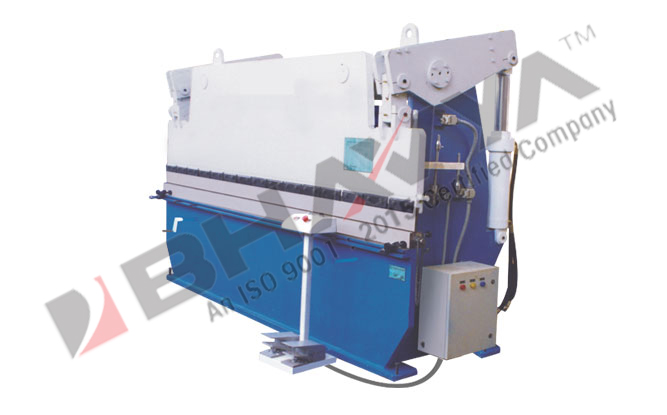A CNC hydraulic press brake (or rotary press lock) is a piece and plate metal rotating machine used in manufacturing. The rotary press lock forms curved surfaces out of workpieces before the grinding operation. The hydraulic press brake also shapes the workpiece at the time of the grinding operation by clamping the working piece between a die pin. Besides hydraulic press brakes, different types of rotary press brakes are also available, including pneumatic, mechanical, and Servo-electronic press brakes.
CNC hydraulic press brake uses different types of CNC machining tools to perform its task. A CNC machine is an automated machine that controls the cutting, bending process, and other production-related tasks. A CNC machine uses programs to perform different tasks.
Working Principle of Hydraulic Press Brake
Hydraulic press brake works through the use of Pneumatic means. Hydraulic means of hydraulic press brake operate based on compression and pressure. The working fluid inside the machine is compressed to reduce the amount of unwanted material. As the number of pressure increases, so does the amount of material that will come out of the die. It can be said that the hydraulic press brake uses hydraulic force for the function of compressing the metal press.

Detailed Process of Hydraulic Press Brakes
In a hydraulic press brake, the working fluid is compressed inside the metal sheet and is then fed into the rotating auger. The rotating auger on the other hand rotates at high speed. The rotation of the auger will make the metal sheet bend at the angle that has been pre-set during the manufacturing process. The workpiece that is to be bent will have a heavy-duty punch attached to it with a piston. This punch will be held securely by the bending sheet that is fitted to the auger.
To start the process, the hydraulic press brake will be released and the metal punching material will be fed into the auger. The piston will be pushed by the heavy-duty punch. The amount of material that comes out of the die when the piston is pushed up will determine the amount of pressure applied. When the buckling of the bending sheet is done, the metal strip will slide down and be attached to the punch.
The process is continued until the metal strip is completely free from all bends. Once this is done, it will be folded and the end of the punch will be connected to the threaded end of the bent sheet. The threaded end of the spring will be connected to the fitting that is attached to the press. When the desired bend is attained, the pressure that is applied will force the metal strip to break and the spring will be reassembled.





